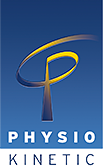Today I wanted to highlight one of the treatment modalities we use at Physiokinetic.
Acupuncture. The process of pushing needles into the body to create a specific response.
Or more aptly described by the Acupuncture Association of Chartered Physiotherapists as, “one of the many skills used within physiotherapy as an integrated approach to the management of pain and inflammation and as a means of stimulating the body’s own healing chemicals in order to aid recovery and enhance rehabilitation”.
The effects of acupuncture can be divided into three areas.
- Local tissue (skin, muscle) response
- Segmental analgesia (effects on the spinal cord)
- Supraspinal analgesia (effects on the brain)
How we would describe this to you as a patient would be as a combination of the above three mechanisms.
When you put a needle into the skin, the skin and muscle you are going through is affected. The body will release chemicals in response to something that shouldn’t be there, these chemicals are described as being part of our normal inflammatory response and will have an impact on the nerves and other cells around that area. This can lead to pain relief and a change of sensation in a painful area.
There is also a dull sensation that occurs with acupuncture, traditional theories would call this ‘Dai qi’. This is thought of as stimulation of nerve fibres that can impact the way our spinal cord is sending information to the brain. Once again modifying the painful sensations we may be feeling from a problem.
Finally there is a central response, a response from our brain. This is where emotion and experience has an impact. The initial two affects as described will be listened to by the brain, which will interpret the sensations based on previous memories and experience of this kind of sensation. This has a neurological and chemical affect in the different parts of the brain, which will then in turn change the way the brain feels that area, affecting your pain.
We have two physiotherapists that practice acupuncture as part of a combination of treatment approaches. If it is something you are particularly interested in please get in touch and ask us any questions you may have!
For further reading see https://www.aacp.org.uk/page/14/what-is-acupuncture
